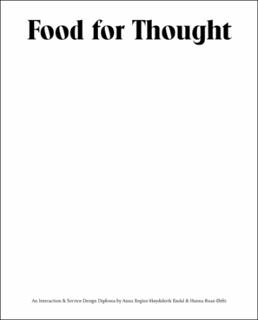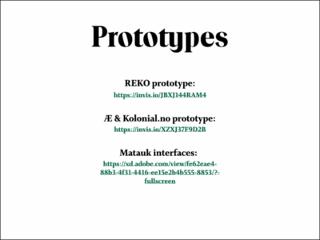| dc.description | Food is a basic need. However, it does not just have nutri-tional value. It is a cornerstone of any culture, and a symbol of identity. All around the world, all through history, people have gathered around the pots. Times are changing, and food is currently threatening both people and planet.
We need to collectively address the challenges posed by unsustainable food consumption. It is a matter that requires measures at all levels of the food chain. Without giving the consumer the blame or suggesting that we are solely responsible for changing the current trajectory, our approach has been to zoom in on the consumer role.
During this diploma, we have been researching what prevents consumers from making sustainable choices, and how design can be used as a tool for change. We have come to the conclusion that in order to engage and act in a transition towards sustainable food consumption, consumers need knowledge about sustainable choices. The choices need to be accessible and convenient and they have to resonate with the culture that the consumer identifies with.
Food for thought is a design project where we illustrate possibilities digital tools holds for sustainable food consumption, in a Norwegian context. We have exemplified how they can be utilised to facilitate more sustainable consumption on three different levels through encouraging seasonal shopping in the mainstream grocery store, local grocery shopping through a new REKO platform, and harvesting of food from nature through a new service called Matauk.
We believe that sustainability is not a destination, but a journey. Embarking on this journey means continuously challenging our habits and changing the course little by little. Our interventions are therefore designed for the present, not the far future. | en_US |

